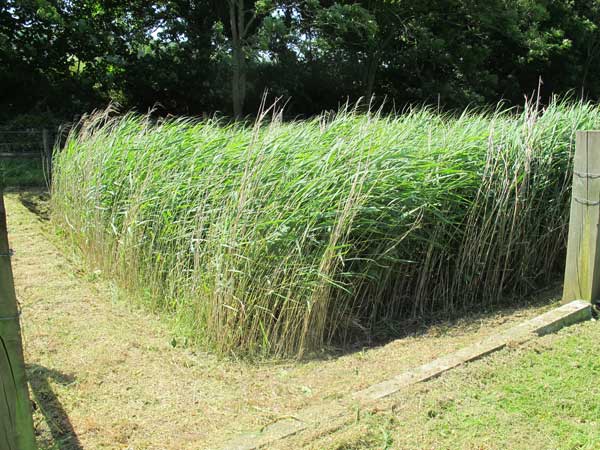Henman Basecamp, National Trust
Residence used on intermittent basis, with working parties of 20 volunteers arriving for a week’s stay and then departing all at the same time. The local watercourse requires strict protection, so very thorough sewage treatment is essential. With a small garden, odour could be an issue if a reed bed were to be used to treat septic tank effluent. So, the solution was to install an underground powered treatment plant, to produce an odourless effluent but not meeting the EA standard, followed by a 36sq.m Compact Vertical Flow Reed Bed, producing excellent quality final effluent.content
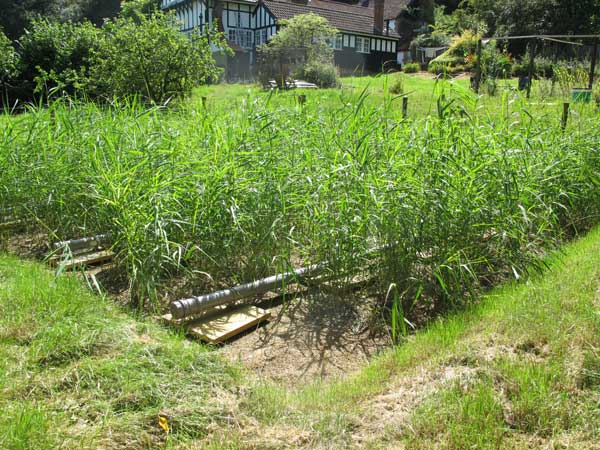
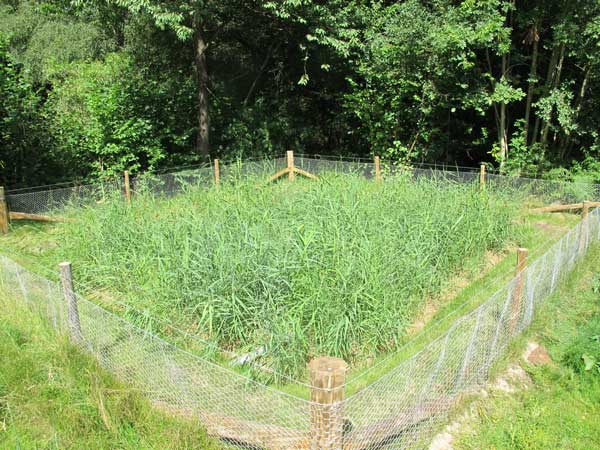
Henman Basecamp’s wetland is a typical Compact Vertical Flow Reed Bed, surrounded by rabbit-proof fencing, with turf between fencing and reed bed to provide a “soft” finish. Common Reed (Phragmites australis) is planted throughout this bed, providing dense surface cover to minimise weed growth, while providing the correct permeability of the sand surface, so maximising treatment efficiency.
By keeping the bed thoroughly weed-free, especially during the first two growing seasons, the reeds are allowed to dominate and outcompete other plants, minimising maintenance requirements.
Longleat Safari Park
Thousands of people visit this visitor attraction during the summer, and the long-lived percolating filter beds eventually needed a bit of help to meet the legal discharge standard. So, a 6,000sq.m surface flow reed bed was installed to provide tertiary treatment, as well as a wonderful wildlife habitat and a beautiful addition to the view on the visitor train-ride!
Surface flow wetlands play the same role as subsurface horizontal flow reed beds. Although they require more surface area, there is no gravel to clog up and they are much more sustainable, as well as being the closest to natural reed beds and so best as wildlife habitat.
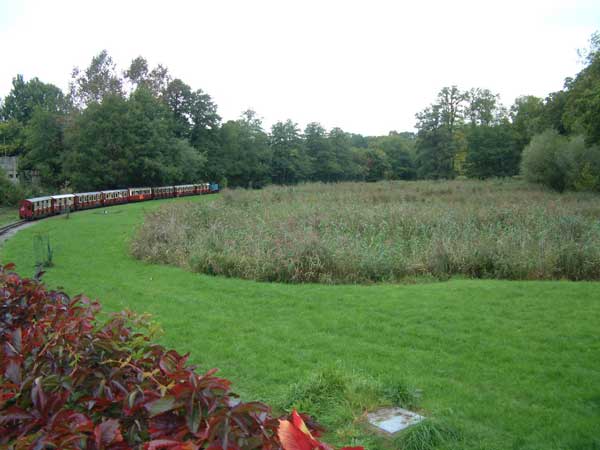
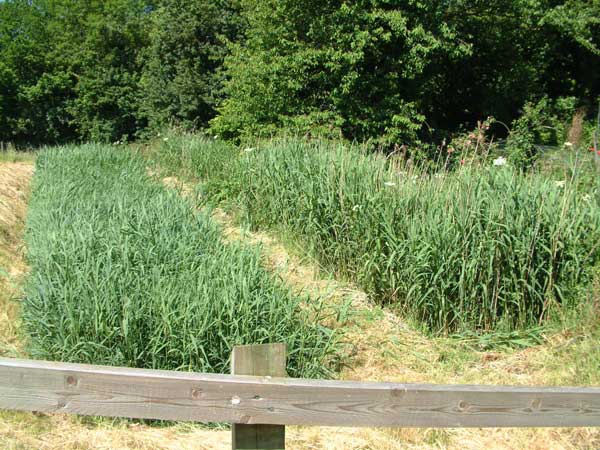
Meadowsweet Farm.
Occasionally, we are called on to sort out problem reed bed systems. This photo shows two completely independent treatment wetlands. The right hand bed is a subsurface horizontal subsurface flow reed bed, which never met the ammonia standard for the holiday cottages, and smelled terrible. On the left is its replacement, a Compact Vertical Flow Reed Bed which has done the job nicely from day one!
Unlike horizontal subsurface beds, vertical flow reed beds are fully aerobic. Vertical flow beds are the only passive approach of wetland that can properly remove ammonia. At the same time the BOD (organic load) is removed, and all achieved using a fraction of the footprint of horizontal flow beds.
St Olaf's Chapel
An office complex within converted outbuildings in a rural setting, discharging to a septic tank. With a sensitive watercourse as the only discharge destination, especially thorough treatment has been afforded with a 42sq.m Compact Vertical Flow Reed Bed leading to a 50sq.m surface flow reed bed.
Typical maintenance procedures include: weeding the bed; strimming round to tidy and continually redefine the bed edging; checking the upstream equipment (eg septic tank, powered treatment plant) and advising emptying, etc; and checking pipework for blockages and correct functioning. Often, users are happy to undertake system maintenance themselves. However, we do offer this service; and this reed bed system is one of several contractually maintained by Watercourse Systems.
